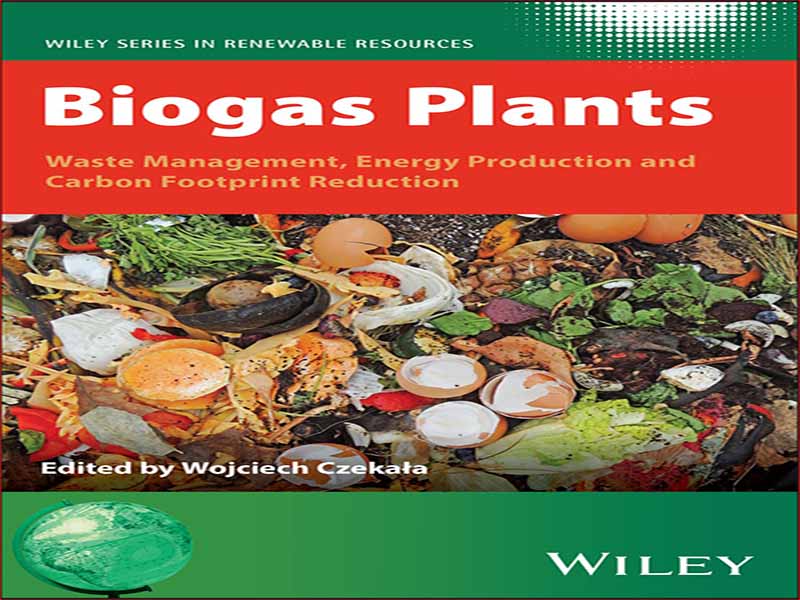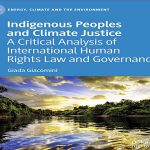- عنوان مجله: Biogas Plants/Waste Management, Energy Production and Carbon Footprint Reduction
- نویسنده: WOJCIECH CZEKAŁA
- حوزه: نیروگاه, مدیریت زباله
- سال انتشار: 2023
- تعداد صفحه: 347
- زبان اصلی: انگلیسی
- نوع فایل: pdf
- حجم فایل: 6.91 مگابایت
منابع تجدیدپذیر، استفاده و اصلاح آنها، در بسیاری از فرآیندهای مهم با تأثیر عمده بر زندگی روزمره ما دخیل هستند. کاربردهایی را می توان در بخش انرژی، رنگ ها و پوشش ها، و صنایع شیمیایی، دارویی و نساجی یافت که فقط چند مورد را نام برد. این منطقه چندین رشته علمی (کشاورزی، بیوشیمی، شیمی، فناوری، علوم محیطی، جنگلداری و غیره) را به هم متصل میکند، که داشتن یک دیدگاه تخصصی در مورد تعاملات پیچیده را بسیار دشوار میکند. بنابراین، ایده ایجاد مجموعه ای از کتاب های علمی، با تمرکز بر موضوعات خاص در مورد منابع تجدید پذیر، بسیار مناسب بوده است و می تواند به روشن شدن برخی از ارتباطات زیربنایی در این زمینه کمک کند. در دنیایی که به سرعت در حال تغییر است، روندها نه تنها ویژگی مد و دیدگاه های سیاسی هستند. علم نیز عاری از هیاهوها و زمزمه ها نیست. امروزه استفاده از منابع تجدیدپذیر اهمیت بیشتری یافته است. با این حال، بخشی از تبلیغات یا مد نیست. از آنجایی که بحثهای پر جنب و جوش بین دانشمندان در مورد اینکه چند سال هنوز میتوانیم از سوختهای فسیلی استفاده کنیم ادامه دارد – نظراتی بین 50 تا 500 سال – آنها موافقند که ذخیره محدود است و نه تنها جستجو برای حاملهای انرژی جدید ضروری است. بلکه برای منابع جدید مواد. از این نظر، حوزه منابع تجدیدپذیر یک حوزه حیاتی در جستجوی جایگزینهایی برای مواد خام و انرژی مبتنی بر فسیل است. در زمینه تامین انرژی، منابع مبتنی بر زیست توده و انرژیهای تجدیدپذیر در کنار جایگزینهای دیگری مانند انرژی خورشیدی، انرژی بادی، نیروی هیدرولیک، فناوری هیدروژن و انرژی هستهای بخشی از راهحل خواهد بود. در زمینه علوم مواد، تأثیر منابع تجدیدپذیر احتمالاً بیشتر خواهد بود. استفاده یکپارچه از محصولات زراعی و استفاده از جریان های زباله در صنایع خاص اهمیت بیشتری پیدا می کند و منجر به روشی پایدارتر برای تولید مواد می شود. اگر چه جامعه ما قرن ها پیش بسیار بیشتر (تقریباً منحصرا) مبتنی بر منابع تجدیدپذیر بود، اما در قرن نوزدهم در جهان غرب ناپدید شد. اکنون زمان تمرکز مجدد بر روی این زمینه تحقیقاتی فرا رسیده است. با این حال، این نباید به معنای «بازگشت به طبیعت» باشد، بلکه باید یک تلاش چند رشتهای در سطح بسیار تکنولوژیکی برای انجام تحقیقات به سمت فرصتهای جدید، و توسعه محصولات و محصولات جدید از منابع تجدیدپذیر باشد. این امر برای تضمین سطح قابل قبولی از آسایش برای تعداد فزاینده مردمی که در سیاره ما زندگی می کنند ضروری است. این چالش برای نسلهای آینده دانشمندان است که راههای پایدارتری برای ایجاد رفاه و مبارزه با فقر و گرسنگی در جهان ایجاد کنند. یک رویکرد جهانی قطعا مورد علاقه است.
Renewable resources, their use and modification, are involved in a multitude of important processes with a major influence on our everyday lives. Applications can be found in the energy sector, paints and coatings, and the chemical, pharmaceutical, and textile industries, to name but a few. The area interconnects several scientific disciplines (agriculture, biochemistry, chemistry, technology, environmental sciences, forestry, etc.), which makes it very difficult to have an expert view on the complicated interactions. Therefore, the idea to create a series of scientific books, focusing on specific topics concerning renewable resources, has been very opportune and can help to clarify some of the underlying connections in this area. In a very fast-changing world, trends are not only characteristic of fashion and political standpoints; science too is not free from hypes and buzzwords. The use of renewable resources is again more important nowadays; however, it is not part of a hype or a fashion. As the lively discussions among scientists continue about how many years we will still be able to use fossil fuels – opinions ranging from 50 to 500 years – they do agree that the reserve is limited and that it is essential not only to search for new energy carriers but also for new material sources. In this respect, the field of renewable resources is a crucial area in the search for alternatives for fossil-based raw materials and energy. In the field of energy supply, biomass- and renewables-based resources will be part of the solution alongside other alternatives such as solar energy,wind energy, hydraulic power, hydrogen technology, and nuclear energy. In the field of material sciences, the impact of renewable resources will probably be even bigger. Integral utilization of crops and the use of waste streams in certain industries will grow in importance, leading to a more sustainable way of producing materials. Although our society was much more (almost exclusively) based on renewable resources centuries ago, this disappeared in the Western world in the nineteenth century. Now it is time to focus again on this field of research. However, it should not mean a “retour à la nature”, but should be a multidisciplinary effort on a highly technological level to perform research towards new opportunities, and to develop new crops and products from renewable resources. This will be essential to guarantee an acceptable level of comfort for the growing number of people living on our planet. It is “the” challenge for the coming generations of scientists to develop more sustainable ways to create prosperity and to fight poverty and hunger in the world. A global approach is certainly favored.
این کتاب را میتوانید از لینک زیر بصورت رایگان دانلود کنید:
Download: Biogas Plants


































نظرات کاربران